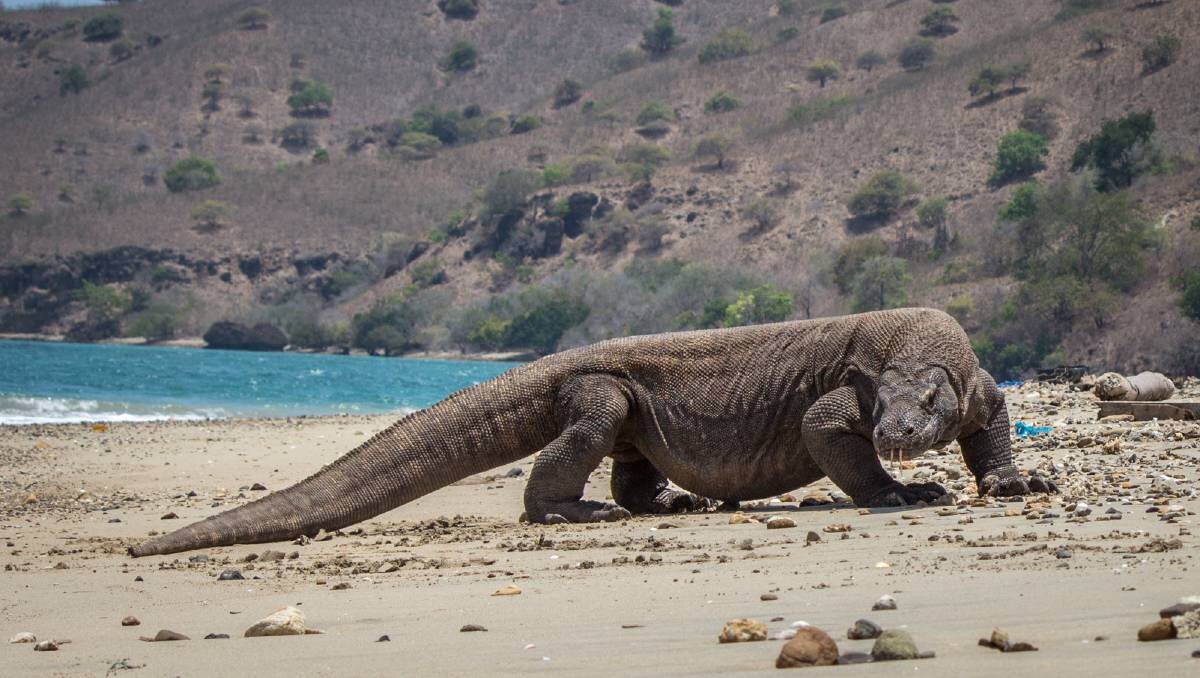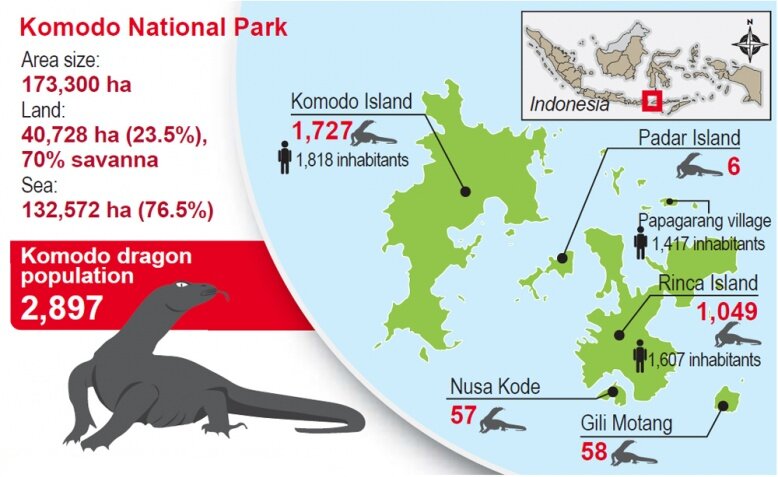Important Facts For Prelims
Komodo Dragon
- 22 Sep 2020
- 2 min read
Why in News
A recent study conducted by Australian universities has found out that the Komodo dragon could become extinct in the next few decades due to climate change.
- In February 2019, the government of Australia officially declared the first known extinction of a mammal (Bramble Cay melomys) as a result of human-induced climate change.
Key Points
- Scientific Name: Varanus komodoensis.
- Komodo dragons are the largest and heaviest lizards on Earth. They have long, flat heads with rounded snouts, scaly skin, bowed legs, and huge, muscular tails.
- Komodo dragons can eat almost anything, including invertebrates, birds, and mammals like deer, pigs, and even large water buffalo.
- They have venom glands loaded with toxins which have been shown to secrete anticoagulants.
- An anticoagulant is a compound which prevents the victim's blood from clotting, causing it to bleed to death.
- The venom lowers blood pressure, causes massive bleeding, and induces shock.
- Habitat:
- Komodo dragons have thrived in the harsh climate of Indonesia's Lesser Sunda Islands for millions of years. They prefer the islands’ tropical forests but can be found across the islands.
- Komodo National Park, a UNESCO World Heritage site, is situated in the Island of Komodo (eastern Indonesia) and is the only habitat for this lizard species.
- Threats:
- Anthropogenic factors.
- Small size of population, less prey and higher inbreeding factors.
- Climate change is likely to cause a sharp decline in the availability of habitat, reducing their populations even further.
- Conservation:
- IUCN Status: Vulnerable.
- CITES: Appendix I. (The commercial trading of live specimens or any parts, dead or alive of Komodo is prohibited.)
- In August 2019, the Indonesian government ordered the relocation of the residents of the Island of Komodo in a bid to conserve Komodo dragons and the Komodo National Park.








